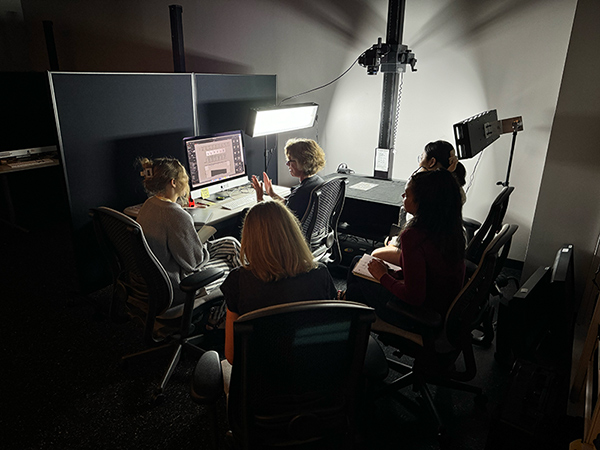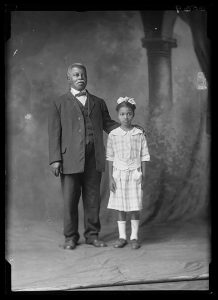In the first year of the COVID pandemic, when the world had come to a standstill, UVA Library’s Digital Production Group took on a new project: familiarizing themselves with the Federal Agencies Digital Guidelines Initiative (FADGI). The initiative is a collaborative effort by federal agencies “to articulate a common sustainable set of technical guidelines, methods, and practices for digitized and born digital historical, archival and cultural content,” according to its mission statement.
The Digital Production Group (DPG) is responsible for the creation and preservation of the Library’s rare and unique digital holdings. Stacey Evans, an Imaging Specialist and Project Coordinator; Eze Amos, a Technical Lead; and Christina Deane, Manager of the DPG, worked together to make sure that the DPG was adhering to the guidelines set forth by FADGI. Evans, a photographer who has nearly 30 years of experience working in digital imaging, especially focused on the realm of cultural heritage imaging — capturing and documenting special and historic objects.

“The quality of documentary photography is subjective. But cultural heritage imaging is objective,” Evans said. She cited the FADGI code of ethics to illustrate her point: “The cultural heritage community has a responsibility to produce digital images that look like the original records (textual, photograph, map, etc.) and are a ‘reasonable reproduction’ without enhancement. We encourage the use of digital technology to increase access to information without altering the fundamental nature of the historic record.”
Following the FADGI guidelines, the DPG now uses a strict set of parameters for cultural heritage imaging, involving a fixed camera position, fixed lighting, specified camera settings, and software processing. Evans and her DPG coworkers test their camera settings by photographing a measurable device called a “target,” and then running the photograph through software analysis to check its resolution, exposure, color balance, sharpness, and tone. The software, called OpenDICE, which is free and developed by the Library of Congress, gives the photographs a FADGI star rating (one through four stars, four being the highest).
“We strive for three-to-four-star ratings,” Evans said.

In 2022, Evans led a team in rephotographing glass-plate negatives from the Library’s Holsinger Studio Collection, which went on to be featured in “Visions of Progress: Portraits of Dignity, Style, and Racial Uplift,” a major exhibition in the Albert and Shirley Small Special Collections Library. “Visions,” which showcased portraits that African Americans in central Virginia commissioned from the Holsinger Studio during the first decades of the 20th century, received national media attention. Evans and her team followed FADGI guidelines in making photographic reproductions of the negatives and then creating “artist’s renderings” of the portraits using Photoshop.
“We were pleased that in comparing the original scans of the negatives from the 1990s to the images our team created, the quality of the portraits dramatically improved,” Evans said.
Over the past year, Evans attended numerous digital imaging conferences, including the Society for Imaging Science and Technology’s 2023 Archiving Conference in Oslo, Norway, and co-chaired digiTIPS 2024, an online program that promotes international standards and guidelines for cultural heritage imaging. “It’s nice to connect in person and learn about different studio practices,” she said.
Evans stressed that all photo studios are different and have to adapt to financial and physical limitations. The DPG was able to incorporate FADGI’s physical environment recommendations before moving into its new studio in the newly renovated Shannon Library. “We are on the ground floor to allow for fewer vibrations, and we have no windows giving us full control of light. We have a zoned lighting ceiling system, and the studio is painted in all neutral colors,” Evans said.
“All of these guidelines allow us to create as true a photographic reproduction of the original object as possible,” she said. “We are proud to create digital surrogates of archival artifacts.”
This story originally appeared in the Library’s Annual Report for FY 2023-24. Download the full PDF to read more.
